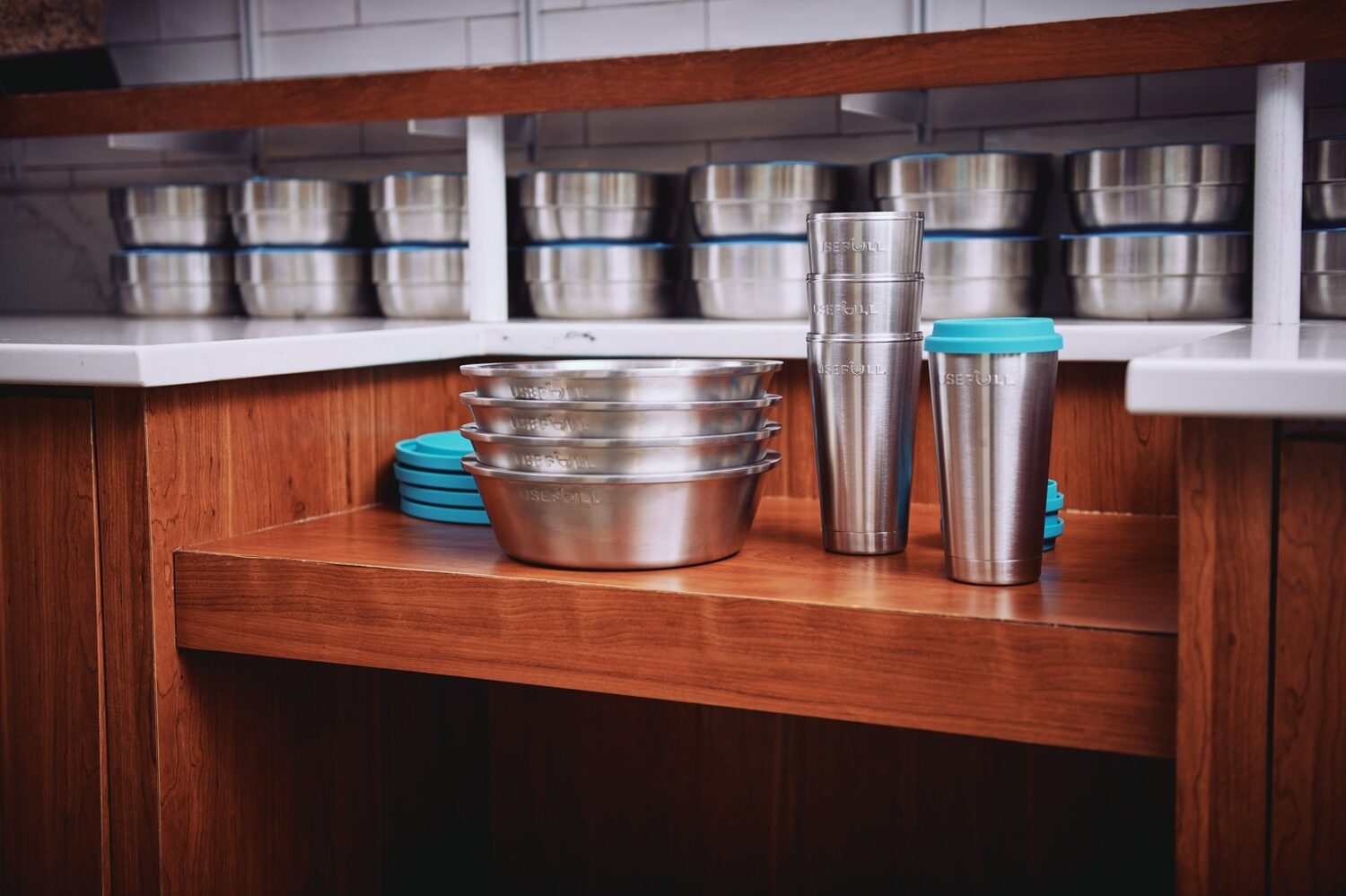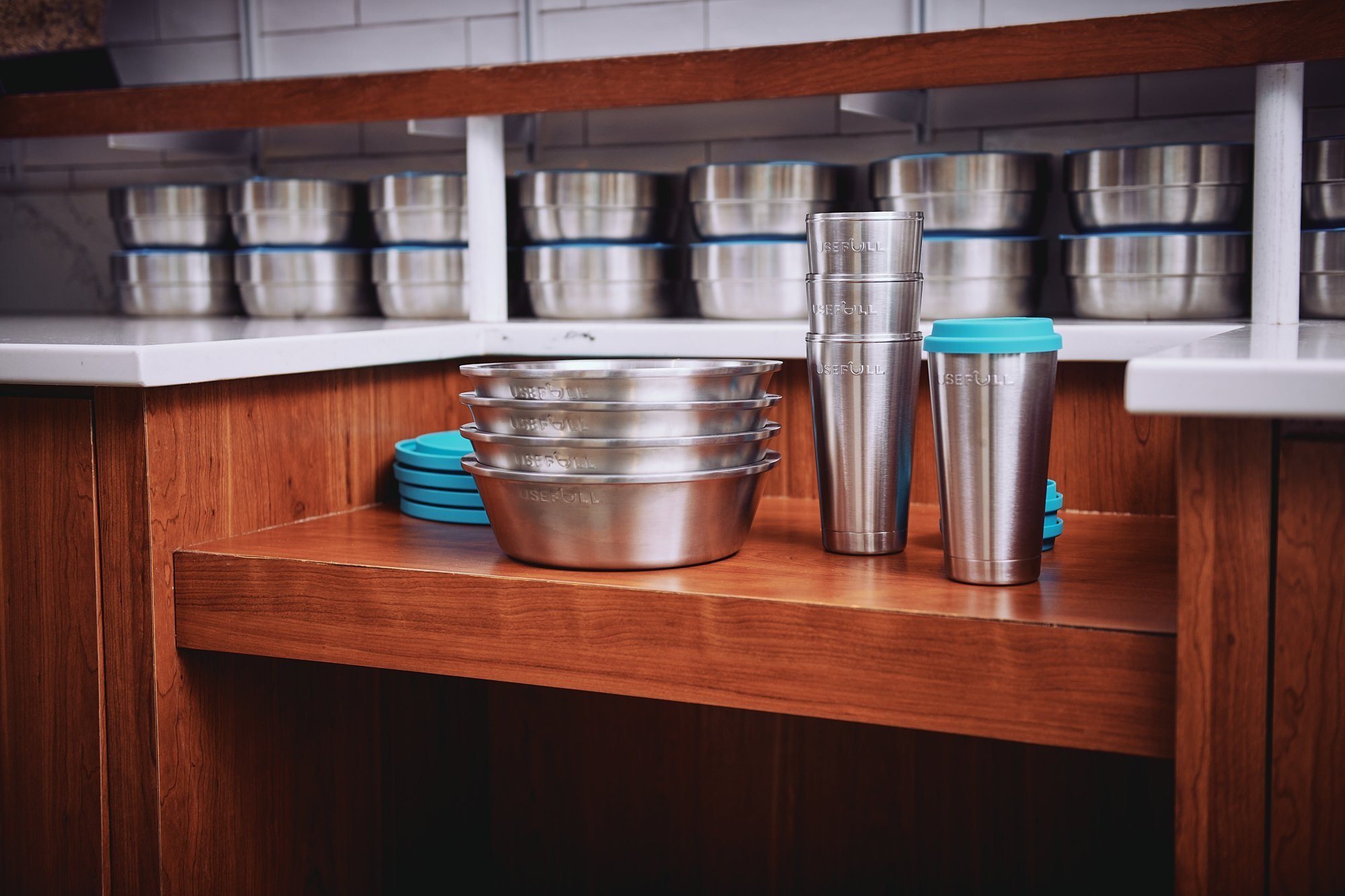In 2024, reusable takeout is a key component of organizations’ sustainability programs – which means that many campuses and businesses are now choosing which type of reusable container they would like to use. There are two main reusables options on the market: stainless steel and plastic.
USEFULL chose stainless steel as the material for our reusable containers. And the studies don’t lie – stainless steel is the clear winner when it comes to both sustainability and human health.
Stainless steel is durable
In order to make an environmental impact, reusable containers must be, well, reused. So, it’s incredibly important that reusable containers are durable and are able to withstand many cycles of use and washing.
When it comes to durability, stainless steel is a clear winner. Stainless steel’s durability makes it a popular choice in a wide variety of applications, from cookware to healthcare to architecture. This durability makes stainless steel the ideal material for reusable containers. Studies have found that stainless steel containers last well over 1,000 uses. In fact, many USEFULL containers have already been used more than 150 times – and we’re just getting started.
With prolonged use, stainless steel becomes the more sustainable option
We are sometimes asked the question – what about the creation of stainless steel containers? Doesn’t that process have a big environmental impact?
Creating a durable container from metal does use more energy, water, and resources than a flimsy plastic or paper cup. However, according to lifecycle assessments, once one stainless steel cup is used 20 – 115 times, that cup is better for the environment than the equivalent single-use plastic cups.
Stainless steel containers become an even better option when they contain recycled material. One study found that including 50% recycled steel in a reusable cup decreased the global warming potential by 94% and fossil fuel resource depletion by 97%. To minimize the impact of our containers, USEFULL containers contain recycled stainless steel.
Stainless steel can be recycled indefinitely
It’s in the name – reusable containers are built to be reused. But all reusable containers must be retired eventually, so it is important to consider containers’ entire lifecycle – even disposal.
While the plastics industry loves to sell the idea of plastics recycling, recycling is simply not the answer to our plastic problem. When we look at the actual practice of plastic recycling in the US, the numbers are disappointing: in 2021, just 5-to-6% of US plastic was recycled. But even in an ideal world where all plastic is recycled, plastic can only be recycled once or twice – and usually not into a new food container – since the polymers break down during the recycling process.
Unlike plastic, stainless steel does not break down during the recycling process and can be recycled indefinitely. And in practice, stainless steel’s high value makes it worth collecting and sorting. As a result, 95% of stainless steel is recycled at the end of its life.
Stainless steel supports human health
The United Nations defines sustainability as “meeting the needs of the present without compromising the ability of future generations to meet their own needs.” USEFULL believes in supporting both parts of that definition – the needs of both the present and the future.
One of the present’s most important needs is human health. To us, this means a takeout experience free of toxic chemicals.
Unfortunately, most takeout containers out there don’t support human health: many compostable containers contain PFAS “forever chemicals,” while plastic containers shed microplastics and endocrine-disrupting plastic chemicals into our food.
That’s why when it comes to safety, food-grade stainless steel containers are a top choice. Made from high-quality materials, stainless steel does not leach harmful chemicals into food. It’s also non-reactive, so it doesn’t interact with acidic or alkaline foods, and it is resistant to corrosion. Simply put – stainless steel is a material that we feel comfortable touching our clients’ food.
Bottom line
At USEFULL, we set out to develop containers that protect two very important things – our environment and human health. After considering lifecycle impact, toxicity, and other factors, we chose stainless steel.
If you are completing a similar process – evaluating what reusable container is right for your organization – please feel free to get in touch with us. We’d love to chat about stainless steel and answer any questions you may have!








